Finding the Leak
Woody has spent the last couple of weeks trying to find a persistent leak around the windows on the east side of the house, and a few days ago he sent me a text that said, basically, "I found it."
Today I persuaded him to stay late and give me a little walk through the site showing me where the leak was and how it was happening. It's a little hard to follow if you don't remember the exact configuration of trim around our windows, so bear with me.
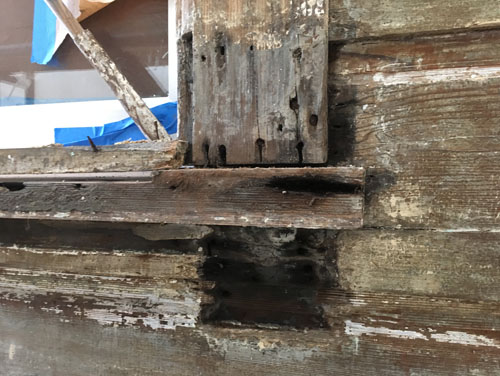
Here's the base of the upstairs window with the paint stripped and most of the pieces of trim removed.
Note that the wood has rotted around the nails. This is actually quite common: the rusting of the nails creates an acidic environment that eats away the wood. One of the things that will happen as part of this work is replacing all the old rusted nails with stainless nails.
Anyway, the important things to know here is that just above the sill there was a boxed-out base of the pilaster jamb trim. That boxed out trim had a hole in it, so water ran inside of it. The trim wasn't really set up to eject that trim, as it should have been, so it basically just sat in there until it dried out.
Then the old felonious painters came along and gunked everything up with a lot of sealant.
Suddenly the water was trapped: it got inside but could not evaporate out, and water kept coming in. It overfilled the pocket it was sitting in -- this is why the leak showed up after several rains and not right away -- and ran over the top of the siding into the house.
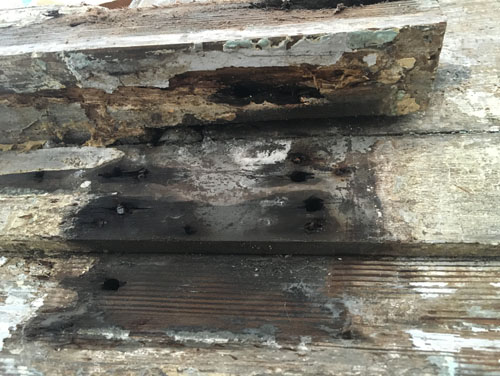
Here's the view of the sill from beneath. You can see a removed piece of trim there -- that was a small corbel. It was held in place with lots of caulk and that held the water in place, too. The top of the corbel and the bottom of the sill are riddled with dry rot.
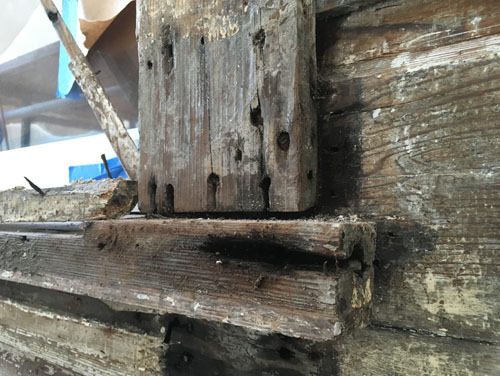
On the side you can see another place where water gets in: at the groove of the v-rustic siding, there ends up being a little gap behind the jamb trim. That's just open. Woody's plan is to fill that gap, which is easy to do with a spare piece of siding, since the same shape fits into that space when turned upside down.
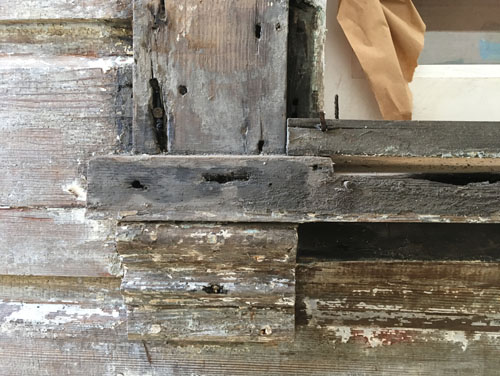
Here's the other side of the same window sill, with the little corbel still in place. This side doesn't appear to have been leaking. Yet.
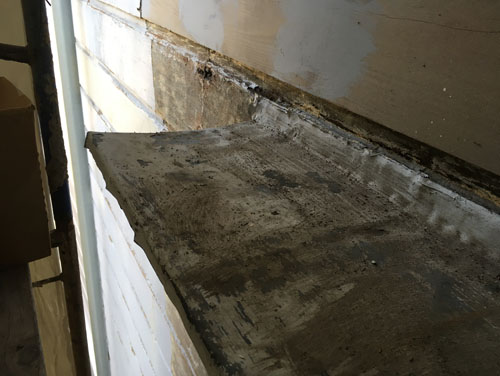
And surprisingly this was not a source of a leak: the lead caps were designed to be just flat, no slope. Woody will redo them to have a slope so they shed water, as they should.
Not everything old was built really well. Sometimes it's just still there because people got lucky.
posted by ayse on 04/22/17